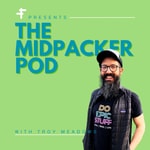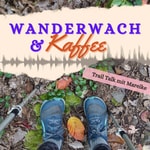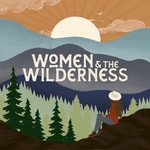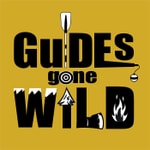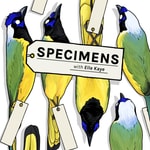All Land is Beautiful – Détails, épisodes et analyse
Détails du podcast
Informations techniques et générales issues du flux RSS du podcast.
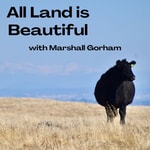
All Land is Beautiful
Marshall Gorham
Fréquence : 1 épisode/25j. Total Éps: 19

Classements récents
Dernières positions dans les classements Apple Podcasts et Spotify.
Apple Podcasts
🇺🇸 États-Unis - nature
22/02/2025#100🇨🇦 Canada - nature
26/12/2024#96🇨🇦 Canada - nature
25/12/2024#85🇨🇦 Canada - nature
24/12/2024#80🇨🇦 Canada - nature
23/12/2024#71🇨🇦 Canada - nature
22/12/2024#63🇨🇦 Canada - nature
21/12/2024#57🇺🇸 États-Unis - nature
21/12/2024#90🇨🇦 Canada - nature
20/12/2024#36
Spotify
Aucun classement récent disponible
Liens partagés entre épisodes et podcasts
Liens présents dans les descriptions d'épisodes et autres podcasts les utilisant également.
See all- https://tahoerimtrail.org/
5 partages
- https://ca.audubon.org/
3 partages
Qualité et score du flux RSS
Évaluation technique de la qualité et de la structure du flux RSS.
See allScore global : 58%
Historique des publications
Répartition mensuelle des publications d'épisodes au fil des années.
E16: Beaver Dams are Dam Good Business, with Garrett Costello (Symbiotic Restoration)
Épisode 19
mercredi 18 décembre 2024 • Durée 01:06:33
Building off of Episode 13, Bringing Chaos Back to a Meadow, on this episode I talk with Garrett Costello, founder and owner of Symbiotic Restoration, a growing outfit helping to restore degraded streams and meadows across California specializing in low-tech, process-based restoration (which includes Leek Springs Meadow restoration project). In talking with Garret I wanted to go deeper into the actual business of recreating the work of beavers, starting from assessing the condition of a meadow to installing beaver dam analogs, partnerships, business logistics, and everything in between. The fact is that over the last couple centuries humans have worked diligently, to the tune of millions of dollars, to undue and prevent the work of beavers. And yet now, ironically, there is incredible momentum and funding to reestablish that work.
Symbiotic Restoration is one of just a few contractors on the leading front of this quickly growing type of restoration work, so it was so interesting to get the insider scoop.
Follow the great work they do on their Instagram.
E15: Look Beyond the Interstate, with Nicole Braddock (Executive Director of the Solano Land Trust)
Épisode 18
mardi 26 novembre 2024 • Durée 57:36
The work of land trusts is dictated by the needs of the landscape and the people that live on it, and on a diverse landscape with diverse people that can look like a lot of different things. While it’s impossible to cover over 30 years of conservation work, on this episode Nicole Braddock, Executive Director of the Solano Land Trust, highlights the successes, both old and new, of the organization. We see how the work of a land trust doesn’t need to stop or be limited to the protection of land, but that through partnerships and engagement can extend into a much larger community role. In Solano, this looks like getting 100% of local youth outside, creating accessible spaces, working with local tribal communities, protecting important farm and rangeland, and habitat restoration to improve climate resiliency.
Tune in to uncover the hidden beauty of Solano County, and the inspiring stories of conservation that protect both the land and the communities that call it home.
I encourage you to learn more about the Solano Land Trust and plan a visit to one of their amazing preserves like Jepson Prairie or Patwino Worrtla Kodoi Dihi Open Space Park.
E6: Birds, a Common Conservation Language, with Chris Conard
Épisode 8
mardi 27 février 2024 • Durée 01:10:35
On today’s episode, without any shame, we’re again talking about birds.
I got to sit down with Chris Conard and continue this conversation around wildlife success stories in unlikely places, as well as concerning trends. Chris is uniquely qualified to talk about this as he’s spent the last 30 years working in a very unlikely wildlife refuge, aptly named the Bufferlands, which surrounds a sewage treatment plant in south Sacramento County. In fact, he kind of embodies the All land is Beautiful ethos. He was also involved in the most recent Sacramento County Breeding Bird Atlas effort, which found that there are actually more bird species breeding in the county than there were 30 years ago, and is the best individual I personally know at auditory identification of birds, though he’s certainly not one to brag and would be quick to point out others who are better.
More information and events at the Bufferlands Preserve can be found on the Buff Blog.
To go on a field trip with Sacramento Audubon click here.
E5: The American River Conservancy and El Dorado County's First State Wildlife Area
Épisode 7
mardi 6 février 2024 • Durée 01:12:07
2024 is the American River Conservancy's (ARC) 35th anniversary, a year in which the organization celebrates the protection of 30,000 acres of rivers, creeks, oak woodlands, and forests that typify the Upper American River and Cosumnes River watersheds. I talk extensively with Executive Director, Elena DeLacy, to bring perspective on why this is important for both flora and fauna as well as human beings. We also take this opportunity to chat about one of ARC’s legacy projects, El Dorado Ranch, as the organization embarks on the final effort to permanently protect 7,100 acres that will become El Dorado County’s first State Wildlife Area.
To check out ARC's website and event calendar click here.
ARC can be found on Facebook and Instagram.
Check out Stories of El Dorado with Tim Neilsen on the Stories from California Cattle Country podcast on Apple Podcasts or Spotify.
E4: Carbon Farming on PT Ranch, with Molly Taylor
Épisode 6
jeudi 18 janvier 2024 • Durée 01:11:22
On this episode, I sat down with Molly Taylor of PT Ranch, out in Ione, CA, which is located just an hour southeast of Sacramento in Amador County. After reflecting on the last episode I wanted to get more into the weeds on the Carbon Farm Plans and talk with one of the only people I knew personally who has really gone all in on carbon farming. We talk about the moment the decision was made to take a regenerative approach to managing PT Ranch and focus on carbon; Molly’s somewhat indirect and unanticipated path into managing a ranch; the process of writing a carbon farm plan and the on-the-ground practices that have been implemented; and touch on ranch diversification and how the ranch remains a viable enterprise. Here's a link to PT Ranch’s website, and if you ever have the opportunity to check out the ranch and its offerings I highly recommend it.
E3: Birds and Beef with Pelayo Alvarez, Director of California Audubon’s Conservation Ranching Program
Épisode 5
jeudi 28 décembre 2023 • Durée 01:07:28
According to Audubon California, our state has 61 million acres of rangelands that provide food production, carbon sequestration, water infiltration, and habitat for a wide range of species. However, this historic California land use is under threat with an average of 20,000 acres a year being lost to development or crop conversion. This means that in order to protect the birds and ecosystem services of our rangelands, the Audubon Society, and really anyone working in conservation has to work with the ranchers and farmers that own or lease and work those lands. And while there may be some different belief systems or opinions, the land, which is why I started this podcast, is the common denominator. And it's there that we find we have a lot more in common than we thought.
I’m excited to have had the opportunity to talk with Pelayo Alvarez, Director of California Audubon’s Conservation Ranching Program and long-time working lands advocate in the Central Valley region. We continue this conversation around conservation on an altered landscape, but for this episode through the lenses of carbon and bird habitat. We talk about the logistics, management plans, and support systems that go into making this more conscientious management of land a reality, and Audubon’s market-based approach through its bird-friendly land certification program.
Hope you enjoy and please check out these links for more information about the Audubon Conservation Ranching program, as well as where you can find your first piece of bird-friendly beef.
California Audubon: https://ca.audubon.org/conservation/conservation-ranching
E2: The Tricolored Blackbird, a Complicated Conservation Story with Robert Meese PhD.
Épisode 4
vendredi 8 décembre 2023 • Durée 01:10:04
Today we do a deep dive into one of my favorite bird species, the tricolored blackbird. On this episode, I’m joined by Dr. Robert Meese, a UC Davis biologist who has spent the last almost 20 years studying this threatened bird species, which I feel symbolizes this notion that there’s no one-size-fits-all solution to land conservation and wildlife protection, especially in California’s Central Valley. You’ll learn about the historic plight of the tricolored, the cessation of its decline, and future success, which embodies a complex of environmental and social issues that neither I nor Bob are qualified to completely analyze, but we touch on several. We discuss the Tricolored Blackbird Statewide survey, a collective effort most recently led by Bob, which utilizes over 100 volunteers to detect and monitor tricolored numbers across California's Central Valley, Coast Ranges, and Central Coast; the adaptability of this bird species, and how it’s come to rely extensively on an altered landscape, characterized by working lands, agriculture, grazing, and dairies; and touch on Bob’s work with state and federal agencies, nonprofits, and numerous private property owners educating, guiding, and studying the bird, from which he has gained a number of insights documenting patterns of movement across the state.
Here's the link to Bob's reference to footage capturing tricolored blackbirds & cattle foraging together: https://vimeo.com/230616322
Introduction to All Land is Beautiful
Saison 1 · Épisode 3
samedi 25 novembre 2023 • Durée 05:06
All Land is Beautiful is a series of conversations around the obvious, and not so obvious, natural beauty of California and beyond. The motivation and nexus to start this podcast comes from an ever-evolving personal perspective shift on what both contemporary habitat conservation means and looks like. You see, I, like I believe most people come to experience and perceive what’s good and bad for nature (at least the ones that I have interacted with) are of the mindset that the best we can do for nature is to simply remove ourselves from it and the natural of order of things will sort themselves out. You see a dense forest, you should leave it alone; you see a natural grassy field, well there certainly shouldn’t be any cows or sheep in it and in that case why don’t we remove all of that old barbed-wire fencing; driving through huge swaths of agricultural land, jeez can you imagine what this all looked like before we turned it into row crops? And while those are all completely legitimate ideas and trains of thought, over the last several years of working throughout the Sacramento Valley and Sierra Nevada Foothills, I’ve come to find this whole thing is far more nuanced.
E1: Rethinking Protection of Plants, Animals, and ”Wild” Places in California with Jaymee Marty, PhD.
Saison 1 · Épisode 2
samedi 25 novembre 2023 • Durée 01:06:43
On this episode of All Land is Beautiful I’m joined by Dr. Jaymee Marty, a biologist based out of the Sacramento Valley, and one of the many insightful and hardworking individuals working to conserve and manage the land, its plants and wildlife throughout the northern California region.
Jaymee is probably best known for publishing a study that scientifically confirmed that cattle grazing in vernal pools, which are seasonal wetlands that host a number of threatened and endangered plant and wildlife species, is not only beneficial but critical to the protection of biodiversity in these ecosystems. A concept that had long been understood within the ecological community, but had never actually been quantified. She continues her work with vernal pools conducting surveys for fairy shrimp and California tiger salamander on behalf of the United States Airforce, as well as a number of non-profit land trusts throughout the Central Valley region, and has picked up a number of other unique and interesting studies and work on other habitats and wildlife as well.
We talk about a lot here. Jaymee’s roots and path to a career in biology and conservation, cattle grazing and its benefits throughout the northern California landscape, and some unique instances in which native wildlife persists in unlikely environments. Hope you enjoy.
E14: More Than Just a Water Trough, with Eric Kellegrew (Sacramento Valley Conservancy)
Épisode 16
mardi 29 octobre 2024 • Durée 01:08:47
On this episode I talk with Eric Kellegrew, Stewardship Director of the Sacramento Valley Conservancy, to walk through the task and effort of developing a well and water trough system at the 4,600-acre Deer Creek Hills Preserve, located in east Sacramento County. A superficially unassuming and honestly uninteresting accomplishment, that is, without context. It turns out this inconspicuous water source provides the means and adds significant capacity to better manage thousands of acres of rangelands, improving cattle management by better dispersing grazing pressure, supplying water for restoration and replanting efforts, and providing a perennial water source for wildlife on an otherwise parched landscape through the summer and fall months.
In my opinion this project perfectly embodies the nature of stewardship work. You identify a problem, you use what you got to find a solution, and it takes a long time, but it’s worth it. We really get into the weeds on this one, dissecting the behind-the-scenes work that often goes unrecognized. Hope you enjoy.
For more information on events and ways you can experience the lands protected by SVC click here.
